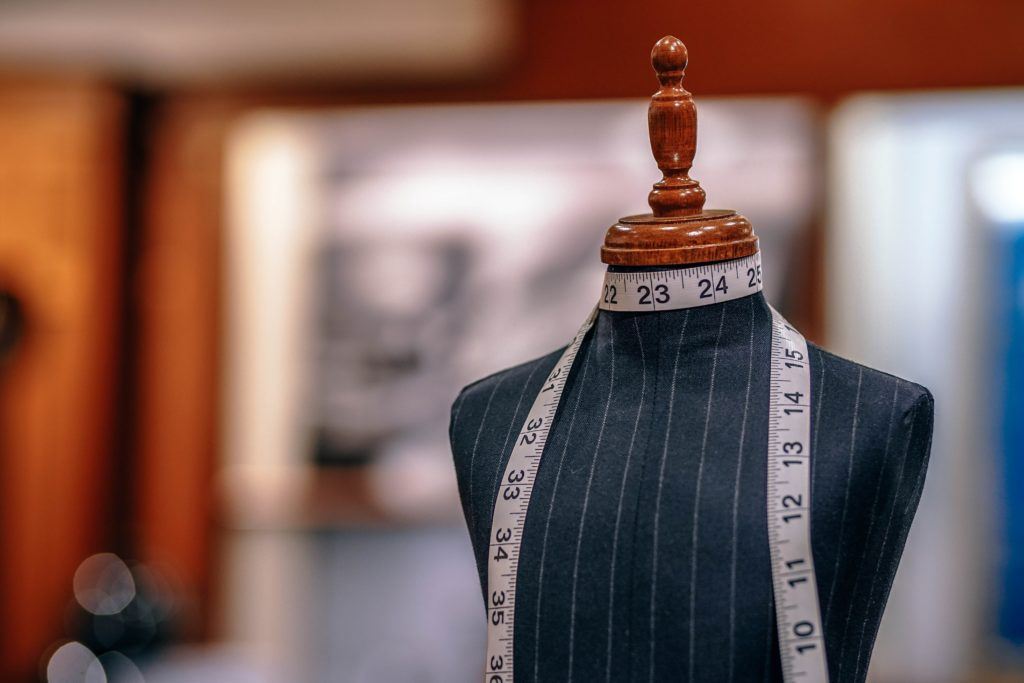Honing your sewing craft can take years – as can developing the confidence to share what you make with others. There is a distinct difference between making gifts for your friends, though, and starting your own sewing business.
If you find yourself inspired by the idea of sharing your work with others, paying careful attention not only to your work but to the wants of potential customers, and managing the financial details of economic independence, then starting a sewing business may be right for you.

The adventure of building up your own business can be thoroughly satisfying, but it introduces a lot of new stresses into your life.
Before getting started, you will want to determine what kind of work it is, precisely, that you’ll be doing, where you want to work from, and how you plan to tackle the economic demands of your potential business.
We can give you a taster of the information you’ll need on how to start a sewing business right here.
How To Start a Sewing Business
Identify Your Interests
If you want to start a sewing business, either from home or in a storefront, then you’ve likely been sewing for quite some time.
As such, you’ll have a pretty good idea of what styles you’re best at, and what kind of sewing you like to do most.
Knowing your skill and the work you’ll do best is essential, as it will enable you to decide what kind of product you want to share with others.
For example, when starting a sewing business, you could focus in any of the following areas:
Repair Work
Do you prefer to spend your time re-attaching buttons, hemming pants, or generally making someone else’s clothes fit better? If so, repair work may be the right line of business for you.
The market for alterations and repairs is exceptional; you’ll likely have consistent work, should you decide to offer your services in this area.
This also means that you could find yourself busier than you ever anticipated being, and you may not get to work on your own creations as often as you desire.
However, if you get the most satisfaction (and feel you can make good money) out of repair work, then make it your freelancing focus!
Custom Designs
Do you gift your friends custom shirts, or do they come to you when they want a particularly stellar, original outfit? If so, you’ll want to make custom designs the focus of your business.
Custom designs can have you working in a variety of areas: you could spend several weeks making individualized wedding dresses, or you could design an original line of casual wear.
Wherever you direct yourself, you’ll need to strike a balance between your inspiration and your drive, because starting a business in custom design takes a lot of work!
The satisfaction when you see one of your customers swooning over a piece you designed, though, makes the hours more than worth it.
Home-Ware
What if you’re not interested in working with clothing, though? There is an equally eager market available for seamstresses looking to craft home-ware; throw blankets, quilts, place mats, and oven mitts are all welcomed on the freelance sewing market.
If you’re feeling clever, you’ll take advantage of any skills with embroidery that you have along with your desire to make a home cozier.
You’ll have the opportunity to sell personalized home supplies to anyone who wants to see their name done up in your well-defined rows.
Stuffed Animals
More specific even than home ware is the market for home-sewn or crocheted stuffed animals.
Every new mother wants to ensure that her child has a toy to cuddle when she’s away, and so long as you keep your product cute and fluffy, you’ll find an audience who wants to make your creation their own.
You don’t necessarily have to stick with the standard lions, tigers, and rabbits; if you want to, you can sew goblins, unicorns, and all sorts of supernatural and magical creatures to sell at your leisure.
Regardless of the area you decide to focus in, you’re going to want to make sure you have a sample product ready for your potential customers to view.
Know Your Audience
Once you have your product and its samples, you’ll be able to start cultivating an audience. Knowing your audience can require a decent amount of research, both locally, within your area, and online.

Take to social media and see what kinds of people are buying products similar to yours. What are the big trends of the moment?
What kind of advertisements are your soon-to-be competitors using in order to make their merchandise look all the more desirable?
Who do you want to tailor your own business towards? Do you want to work with avante-garde fashion, or sustainable upcycling? How about inclusive sizing? You likely share your area of interest with someone else out in the world.
Once you have a product that you want to share, it’s your responsibility to find them. Take to online forums and put out an ad in your local newspaper; so long as you have the products, and you’ve done your research, people will come to you.
See More: our pick of the best places to sell clothes online
Independent or Cooperative Sewing
You’ll also want to determine whether or not this self-employment venture is one you want to take on alone, or one you want to dive into with some help.
Working alone does allow you more freedom than working with other people. If you find that you’d rather run a sewing from home business, then perhaps it would be best for you to keep your business small, with just you serving as creator and management.
If you’re looking to expand, however, you may want to reach out to your fellow seamstresses and see if one or more of them would be interest in taking on the challenge of starting a business with you.
More people means that business costs, for a storefront or materials, will be easier on you as an individual, but you may find yourself having to compromise on your creative goals for the sake of overall peace.
Home-Based or Free Standing
It will also be important for you to decide whether or not you want to keep your sewing work at home or if you want to take to the streets with a storefront of your own.
If you’re looking to better understand how to start a sewing business with no money, then it may be easiest for you to keep your business small.
You can sew at home and still sell your goods on websites like Etsy, Redbubble, or Society 6.
If you have some funds to spare, though (or if you’ve partnered up with several other fellow seamstresses) you may feel ambitious enough to go out, rent a storefront, and establish yourself as a local name in your chosen field.
Sewing Business Starting Costs
Once you have the basic questions out of the way, you’ll need to consider how much you’re willing to spend on start-up costs.
Much like when a person goes to start a restaurant, it may take you some time, based on the scale of the business you want to create, to start generating a livable income.
Before you make any purchases, though, you will want to make a list of all of the supplies you think you’ll need, and average out what your start-up cost will look like.
Microsoft Excel or one of its many clones will undoubtedly be your friend during this time.
Some of your start-up costs may include:
- A sewing machine, either meant for basic stitches or more complex work.
- Machinery upkeep and maintenance.
- Tools for tailoring and alterations.
- A full-length mirror.
- Higher quality irons and their appropriate ironing boards.
- Rental fees on a potential storefront.
- Online membership fees for online stores.
- Licenses to sell your product.
Be prepared, as well: come tax season after you’ve opened your business, you’ll have to pay a self-employment tax on any income you’ve made.

Your Going Rates
Most importantly, perhaps – save for your identification of the product you want to sell – is knowing how much you want to charge your potential customers, and more specifically, how much you believe your products to be worth.
Here, a little more research is required. What do your would-be-competitors charge for their services and products?
When you’re first starting out in the world of sewing businesses, you likely don’t want to make yourself an aggressive neighbor, so once you’ve done your research, try to set your own rates within the same range as the stores around you.
Do not, though, ever undersell your products or services. Your time and work is valuable; don’t let yourself get talked into charging less for your work just to match the people around you.
Don’t paint yourself as a seamstress interested only in your potential profit, but don’t disrespect your work by underselling it either.
Don’t Be Afraid of Personal Growth with Your Sewing Business
Running your own business, be it out of your home or out of a personalized storefront, takes a lot of organization and forethought.
After you’ve identified the specific area you want to work in, you’ll want to consider other factors of your niche.
How much time, on average and over the course of a week, will you be spending on your customers’ projects? What do you want your income-to-workload ratio to look like? How do you want to advertise your wares?
Ask yourself these questions while also taking into account the points mentioned prior to this one, and you’ll be able to discover for yourself what kind of sewing business is the right one for you to pursue.
Keep in mind, though, that when you’re running your own business or honing your sewing craft, you never stop learning. You will likely make mistakes.
Over time, too, you may find your answers to these questions, or even bigger answers about your desired area of work changing.
There’s nothing wrong with this! Everyone deserves a chance to grow themselves, especially when finding their place within a business.
Here’s a video showing more tips and advice on starting a sewing from home business.
Do you have any tips on running your own sewing business?

Woow this is so interesting,sewing was my hobby,since I was age of 9 years